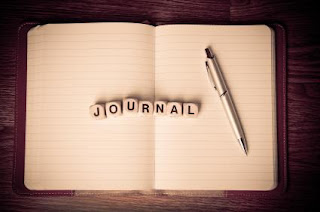Review of an article from The Indexer (2009)
Gender and Authorship in The Indexer: An Article Lost in Cycle of Discourse
The article ‘Gender and Authorship in The Indexer: 1958-2007’ is an article which was published in the 4th issue of the 27th volume in ‘The Indexer: The International Journal of Indexing’ in December, 2009. The author of this article is Catherine Sassen, the librarian of University of North Texas. This article primarily focuses on gender distribution and its change in authorship and indexing, through analysis of five decades of indexing in the very same journal it was published. At the very outset of the article the author describes the purpose of the article - exploring the “sociological characteristics of the literature of a discipline” (Sassen, 2009, p. 164) as reflected in the indexing of the journal in the aforementioned time-span. The article analyses the collected data using the lens of ‘indexing depending on the authority of indexer’.
The article throughout tries to establish the gender disparity present in the first decade and gradual change of scenario and forward movement toward gender equality in the following decades through numerical representations of authorship indexes. In author’s own words the change “should be viewed in the context of the social history of the 20th century” (p. 167). To some extent the author succeeded in her effort, although the claims of reflection of sociological characteristics remain unanswered. There were ample scope for the author to connect the data and its reflection to the discourse and history of gender-hierarchy, which was completely overlooked.
Explaining further the above point, starting from the title itself the readers of the article will have an expectation regarding a discussion on gender and authorship, which also can be interpreted in terms of subjective dominance of a particular gender in the field. In multiple places the author talks about “overwhelming maleness” (pp. 164 - 167), but failed to connect it to the discourse through subjective discussion of autonomy and authorship.
A very extensive methodological process of determining gender from index of authors was followed in this article, which is commendable. Again what was overlooked was the structural interconnectedness of gender, authorship and research work. To begin with the article and its methodology specifically was caught in the pervasive cycle of gender binary, where multiplicity of gender identity was completely overlooked and gender binary was assumed based on names of authors. This seems to be a major drawback for an article basing its discussion on the sociological realm of gender equality.
In the same line of methods followed collected data excluded, although not as a mentioned category, qualitative research articles’ indexing. This was again a major drawback in the methodology, as researches shows that female authorship is more frequent in qualitative research methodology in comparison to quantitative ones (Williams et al., 2017). Absence of this data makes the data representation in this article incomplete, especially from the chosen analyses perspective.
In addition to the above, the represented data in the tables shows a significant difference percentage of authorship in different mediums within the same decade. Even in the first discussed decade, percentage of female article authors were higher than percentage of female authors of editorials or review articles (pp. 166-167), as expressed in table 4a and table 5. This comparison across levels of indexing and authorship within a decade could have facilitated a critical analysis of the data. This is again a missed opportunity and lack in analysis which could have lead to exploration of existing pattern of authority and authorship across decades.
Sassen discussed the data through descriptions of increase in number of women in indexing field. She intriguingly explained how job of indexing was benefiting for women in balancing household chores and job. She explains the increase in authorship through sociological equality of women in society. In spite of its best effort, at this point the article again sidetracks from its primary claim and thesis. It is confusing for readers whether the author talks about only female indexers or female authors.
In conclusion, it can be said that despite of the best efforts of the author, the article remains a descriptive description of an approximate pattern of publications during the discussed five decades - 1958-2007. The article misses on a lot of opportunities of problematising the issue and having an in-depth discussion, and simultaneously fulfilling readers’ expectations build-up through the title. The article seems to be lost within the pervasive cycle of gender discourse, while trying to criticise the same. This article could be good base for developing further research on the above mentioned line, incorporating deeper structural views of gender discourse.
References
Sassen, C. (2009). Gender and Authorship in the Indexer, 1958-2007. The Indexer The International Journal of Indexing, 27 (4), 164-167.
Williams, E. A., Kolek, E. A., Saunders, D.B., Remaly, A., & Wells, R. A. (2017). Mirror on the Field: Gender, Authorship, Research Methods in Higher Education’s Leading Journals. The Journal of Higher Education, 28-53. https://doi.org/10.1080/00221546.2017.1330599

Comments
Post a Comment